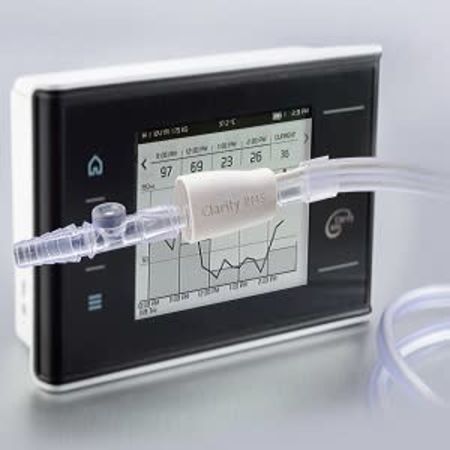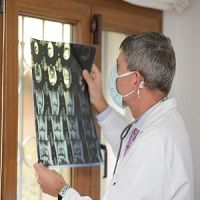Incidence and risk factors for acute kidney injury (AKI) in COVID-19 patients
Recent reports from China, Italy, and the US indicate that there is a 25-37% incidence of AKI among critically ill COVID-19 patients (Singh 2020, Hirsch et al. 2020). In a study of 5449 hospitalized COVID-19 patients, AKI was observed primarily in patients with respiratory failure, with AKI developing in 89.7% of patients on mechanical ventilation compared with 21.7% of patients not requiring ventilation.
Based on laboratory reports, experts speculate that there are two likely causes of COVID-19 induced AKI. One is a systemic inflammatory response resulting from a cytokine storm, and the other is a direct nephrotoxic effect of the COVID-19 virus (Pan et al. 2020, Naicker 2020).
In a prospective study of 701 hospitalized patients with COVID-19, more than 40% had evidence of pre-existing kidney disease upon admission. An explanation given for this phenomenon is that these patients are known to have a higher risk for upper respiratory tract infection and pneumonia (Cheng Y et al. 2020). In addition, some COVID-19 patients may have comorbidities, which are often associated with chronic decline of kidney function (Fanelli et al. 2020). Regardless of the initial severity of their COVID-19 infection and their general physical condition, these patients have had a poor prognosis, with a significantly higher rate of AKI and in-hospital mortality. These findings - existing renal dysfunction in a substantial number of COVID-19 patients upon hospital, as well as significantly higher incidence of AKI and mortality - were corroborated by a retrospective study of 193 COVID-19 patients by Li et al. (Li 2020).
Therefore, it is critical to evaluate renal function early on in hospitalized patients with COVID-19 and continuously monitor it closely through the course of treatment, as early detection and effective intervention may help to reduce the death rate (Cheng 2020, Fanelli 2020, Li 2020).
Assessment of renal function and AKI risk in COVID-19 and other critical care patients
While urine output and serum creatinine are the key diagnostic indicators for AKI according to the RIFLE, AKIN, and KDIGO criteria, several studies have confirmed that urine output alone is a stronger predictor of AKI than creatinine (Deepa et al. 2012, Fornia et al. 2017, Macedo et al. 2011). In fact, recent studies establish the absolute necessity for urine output assessment in patients for diagnosing and staging AKI (Macedo 2015).
In a single-center, prospective study of 339 ICU patients, in which 41.6% of the patients developed AKI, 38% were identified as having AKI using urine output criteria alone; this represented more than twice those identified only by increased serum creatinine levels (Salahuddin et al. 2017). In a multinational, prospective study of 4683 patients in pediatric intensive care units, plasma creatinine levels alone failed to identify AKI in 67.2% of the patients with low urine output. The authors concluded that even if it means keeping patients catheterized longer, urine output monitoring is critical for early detection of AKI (Kaddourah et al. 2017).
The need for continuous, real-time urine flow data in the ICU
In critical care units today, almost all of the patients’ essential physiological functions are electronically monitored and displayed around the clock. ICU medical and nursing staffs routinely rely on devices that monitor essential functions like heart rate, blood pressure, blood gases etc., alerting them of irregularities and enabling them to provide minute-by-minute, life-saving care to ICU patients. Similarly, real-time and accurate monitoring of urine output could improve the clinical management of patients in the ICU, by enabling clinicians to detect early signs of changes in renal function.
“Treating urine flow as a continuous physiological variable instead of an interval parameter would provide more time points for the detection of AKI (Macedo 2011).”
Surprisingly, despite the fact that ongoing or frequent urine monitoring can provide critical information regarding impaired renal function and/or fluid balance, urine output is still being recorded manually and intermittently.
Manual urine flow measurements are not the answer
Manual urine flow measurements are time-consuming, requiring manipulation of urine meters, visual assessment and painstaking data recording. These difficulties in measuring, monitoring and accurately recording urine output bring into question the reliability of urine bag readings, in terms of frequency, regularity, and accuracy.
Furthermore, manual urine measurements in COVID-19 and other patients in isolation increase the risk of infection for hospital staff, as they are required to have contact with the Foley catheter tubing and urine bag, in order to take readings.
Electronic urine monitoring: accurate, real-time data without patient contact
Accurate, real-time urine flow monitoring via an electronic device can facilitate early AKI risk assessment, staging and early intervention, as well as improved assessment of fluid balance and response to diuretics in patients with fluid overload.
In addition, "no-contact" data transmission can reduce the risk of cross-infection for COVID-19 and other ICU patients in isolation.
The Clarity RMS® by RenalSense is a critical care monitoring system that measures real-time urine flow data and transmits notifications of fluctuations to the medical staff on a 24/7 basis, similarly to other vital sign monitors.
Accurate, direct readings of actual urine flow are taken at the catheter entry point by an electronic sensor. Patient data is displayed graphically on a cordless, battery-operated bedside monitor and notifications of fluctuations are transmitted to all hospital information systems. The Clarity RMS is currently in use in leading medical institutions in the US and Europe.
Cheng Y, Luo R, Wang K et al. (2020) Kidney
disease is associated with in-hospital death of patients with COVID-19. Kidney
International 97: 829–838.
Deepa C, Muralidhar K (2012) Renal
replacement therapy in ICU. J Anaesthesiol Clin Pharmacol 28: 386-396.
Fanelli V, Fiorentino M, Cantaluppi v et
al. (2020) Acute kidney injury in SARS-CoV-2 infected patients. Crit Care 24: 155.
Fornia LG, Chawlab L, Ronco C (2017)
Precision and improving outcomes in acute kidney injury: Personalizing the
approach. Journal of Critical Care 37: 244–245.
Hirsch JS, Ng JH, Ross DW, et al. (2020) Acute
kidney injury in patients hospitalized with COVID-19. Kidney Int. In press. https://doi.org/10.1016/j.kint.2020.05.006.
Kaddourah A, Basu RK, Bagshaw SM et al. for
the AWARE Investigators.* (2017) Epidemiology of acute kidney injury in
critically ill children and young adults. N Engl J Med 376: 11-20.
Li Z, Wu M, Yao J et al. (2020) Caution on
Kidney Dysfunctions of COVID-19 Patients. The Lancet. Preprint: April 1, 2020. http://dx.doi.org/10.2139/ssrn.3559601.
Macedo E, Malhotra R, Claure-Del Granado R
et al. (2011) Defining urine output criterion for acute kidney injury in
critically ill patients. Nephrol Dial Transplant 26: 509–515.
Macedo E (2015) Urine output assessment as
a clinical quality measure. Nephron 131: 252–254.
Naicker S, Yang C, Hwang S et al. (2020)
The Novel Coronavirus 2019 epidemic and kidneys. Kidney International 97:
824-828.
Pan X, Xu D, Zhang H et al. (2020) Identification
of a potential mechanism of acute kidney injury during the COVID‑19 outbreak: a study based on single‑cell transcriptome analysis. Intensive Care Med, March 31, 2020.
Salahuddin N, Sammani M, Hamdan A, et al.
(2017) Fluid overload is an independent risk factor for acute kidney injury in
critically Ill patients: results of a cohort study. BMC Nephrology 18: 45-53.
Singh AK (2020) COVID-19 and Acute Kidney
Injury. Nephrology Times, April 21, 2020.



























